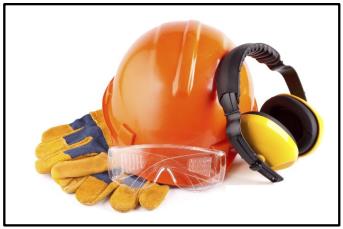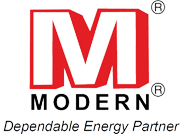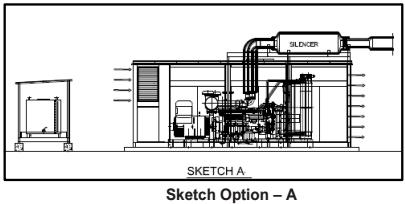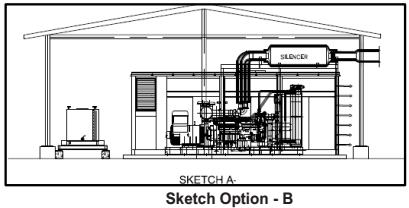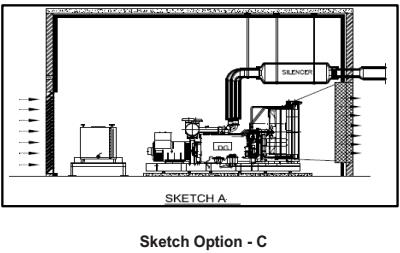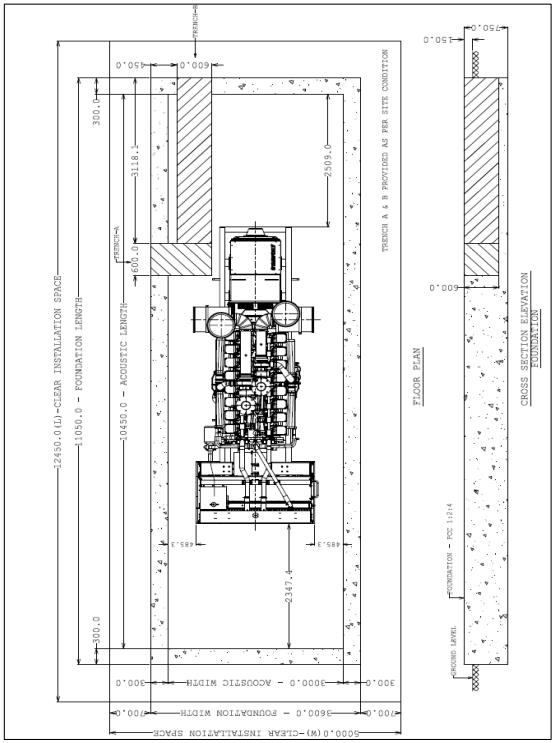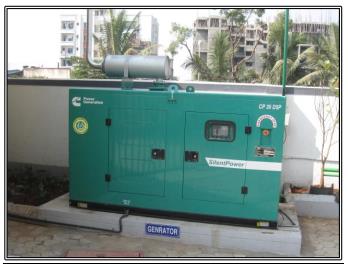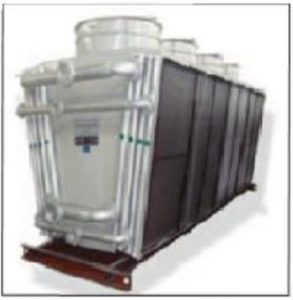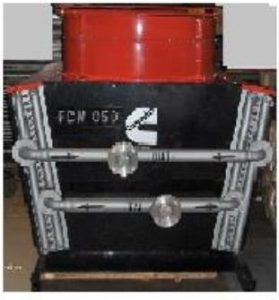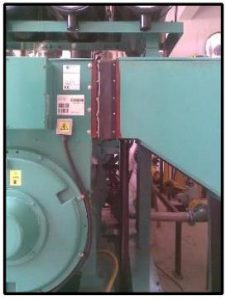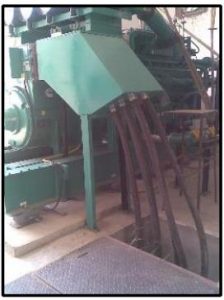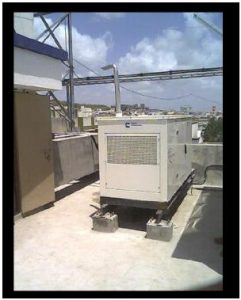Typical DG Set foundation drawing is given above for reference.
D.2 Foundation should be designed considering safe bearing capacity of soil and DG set static and dynamic load. Anti-Vibration Mounts (AVMs) are provided to reduce generator set vibration and noise transmission to the surrounding structure.
D.3 The depth of the foundation to be decided by the customer in consultation with the certified structural engineer depending on static and dynamic load of the DG set and soil condition. Contact GOEM for static and dynamic load data of the DG Set
D.4 The length and breadth of foundation should be minimum 150 mm (6”) more than acoustic enclosure size / base rails size
D.5 Ensure that the concrete is completely set and hardened before positioning the generator set.
D.6 It is recommended to have foundation elevation 150 mm above finish ground level. It helps to maintain cleanliness of DG Set. For areas having heavy rainfall, a higher platform/ rain shed (not mandatory) may be required to prevent water entry and it also helps in operator’s safety.
D.7 DG Set foundation level to be checked with water level tube at frame mounting area and should be within +/- 5mm for 750 kVA and above DG Set. For DG sets below 750 kVA +/- 2.5mm to be maintained. Metal shims to be provided between DG frame and civil foundation to load DG Set uniformly.
D.8 The AVM’s of DG Set should be loaded uniformly for DG sets where AVM’s are placed on foundation & below DG set base frame. Use shims below AVM resting area. Shim plate should be of 3 mm minimum thickness and to be used in multiple as required. Ensure that AVMS are loaded evenly.
D.9 It is recommended to take services of your structural Engineer for designing foundations and carryout seismic analysis if required.
D.10 For cable laying, necessary civil trench to be considered in civil works as per site requirements. In case of cable termination at the top/ bus duct, the trench is not required but necessary supports to be considered.
D.11 In case of special requirement, civil foundation to be casted in isolation with building structure.
D.12 DG Set with integral vibration isolators can reduce vibration transmitted to foundation by @80 %.
D.13 Special conditions for seismic zone to be considered while selection and installation of DG set. Contact GOEM for details.
